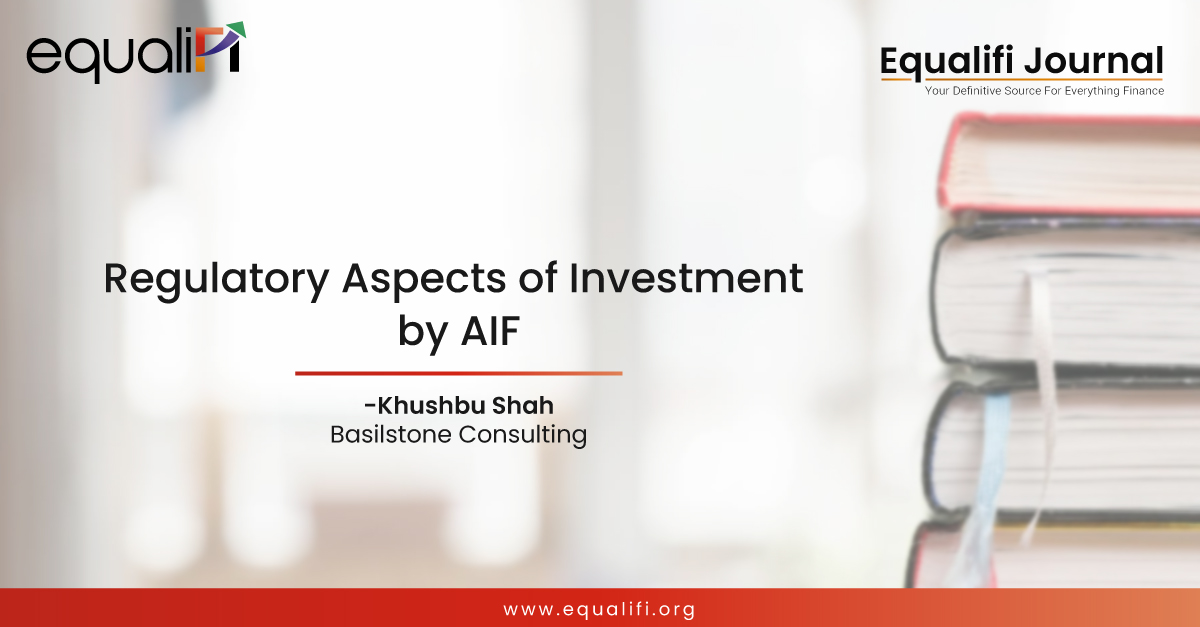The Science and Art of Equity Investing
Posted on: May 20, 2021 | By:
Behavioural bias is one of the biggest challenges in running a sustainably successful investment operation. What helps here is to have an extremely robust framework to manage the investments. There are three important layers to this framework. First layer is an investment philosophy which provides a strong foundation to the framework. Built on top of that layer is the second layer, i.e. core principles, and then, finally, on top of that is the last layer, i.e. a set of rules that will guide you through the turmoil of markets. One should remember that the investment philosophy is the most important overarching entity that is timeless and remains constant. Principles help you put the philosophy in action and can evolve over a period as the investment environment evolves. Rules are the final implementation of the principles. A rules-based framework helps you avoid several behavioural biases and keeps you focused. Though remember that the rules are not to be followed blindly. Rules are for less sophisticated investors to help them follow a set path, but the rules have to be continuously re-evaluated to keep them in tandem with the principles and philosophy.

Let us understand the above with an example. OmniScience has developed a Scientific Alpha investment framework from the first principles of Investing. With respect to investing one understands the concept of Risk and Reward. However, it has been interpreted many times wrongly. A layman definition is that high risk is high return. Or if you need high returns then you need to take higher risk. We believe this is a wrong interpretation. Conceptually, one must be compensated for taking higher risk with higher reward but, the question is does it actually happen. The correct interpretation is that when you are investing, and especially in a high-return asset class such as equities, you are exposed to various risks and if you are able to mitigate risks you can have higher rewards. The academic world links risk with fluctuation or volatility and measures it by standard deviation or beta. Here again, a security with high standard deviation is clearly risky but it is wrong to conclude that any high volatility security will give higher returns.
What one should understand is that since you are investing in a risky asset class you need to minimize your risk. This is the investment philosophy of the Scientific alpha framework – Risk Averseness. The concept of risk averseness was well understood by Benjamin Graham and it was implemented through the requirement of a Margin of Safety. He also defined an investment operation as one which involves thorough analysis, provides safety of capital and an adequate return. This formulates our guiding principles of the Scientific Alpha process – Safety of principal with adequate returns. This further helps define the rules and implementation which primarily focus on the risk mitigation process.
Scientific Alpha can be described as a structured value investing framework that focuses on risk mitigation to generate alpha. For risk mitigation one first needs to understand what risks are present and then understand how to mitigate it. Scientific Alpha framework classifies risk in three categories. First category is of the company specific risks and where these risks are mitigated, we call them SuperNormal Companies. Second category is of the investment related risk and where these risks are mitigated, we call them SuperNormal Price. This category is of the portfolio related risks and where the all three categories of risks are mitigated i.e., minimising chances of losing capital and generating adequate returns, we call it SuperNormal Portfolio. Let us understand each risk category in more detail.
- Company Specific Risks
- Business Risk: As an equity investor one becomes a partner in a firm and if the firm has an unstable business then there are chances of losing capital. The business stability can be determined based on multiple factors including revenue and earnings stability, profitability, margins, cash flow generation, etc.
- Financial Risk: Another way to lose capital is by investing in companies with weak balance sheet – i.e., highly leveraged and poor cash flow generating capability. Any possible distress internal or external can put the firm at bankruptcy risk – with equity holders having the last recourse on company assets.
- Persistent Advantage: The third way to lose capital is to invest in companies that do not allocate capital to generate shareholders wealth. This is where persistent competitive advantage is critical. A firm can sustainably allocate capital efficiently only if it has a persistent advantage, so it is important to look at the track record of the firm for the effectiveness of capital allocation in the past.
- Investment Related Risk
- Price Risk: Price risk or overpaying is the fourth way to lose capital. To mitigate this risk, one needs to estimate a conservative valuation and select stocks available a discount to the conservatively estimated intrinsic value.
- Portfolio Specific Risks
- Concentration Risk: Under diversification is another way of losing capital. Investing in a highly concentrated portfolio of 7 or 9 stocks is extremely speculative and can cause irreparable damage to the portfolio. Buffett himself own 100+ listed and unlisted stocks in his portfolio at Berkshire Hathaway whereas he is mis-interpreted as one vouching for no diversification.
- Skewness Risk: Portfolio skewness created by investing most of the money in the top 3 or 4 high conviction ideas is another way one can lose capital. A company is exposed to multiple internal and external uncertainties. Economic, regulatory, corporate governance, disruption and many other uncontrollable factors can change one’s investment thesis and result in loss.
- Model Portfolio (aka buy & hold): Buy and Hold or Buy and Forget approach is another risk. This approach exposes you to buying or retaining overvalued stocks, stocks where the business models have been disrupted or exposure to several other behavioural biases.
Indian IT services sector over the last few years is an interesting case study to understand the strengths of Scientific Alpha process and how it works. For more than two years, IT service company have formed a majority and significant part of the Scientific Alpha portfolios and it continues to be so. Let us see how IT Service companies fit the scientific alpha framework.
- Stable Business: In the face of the technological transformation happening globally due to new age techs such as Automation, IoT, Cloud, IT companies have exhibited stable recurring cash flows while maintaining one of the best margins and profitability. For the top 15 firms, the median net margin was around 10-12% and return on equity around 20% over the last three years. The concern was on the visibility of growth.
- Strong Balance sheet: One of the strongest balance sheets across the market. No debt, Cash rich balance sheets and steady cash flows. The companies started using the cash to execute buy backs in the last one year. Earlier the same companies have used the strong balance sheet to acquire numerous companies in the new age technologies, such as AI and IoT etc. This helped them build expertise, capabilities and competence in these fast-growth areas.
- Persistent Advantage: There was a major negative sentiment over the IT services companies primarily on two counts. It was professed that the cost arbitrage model is over because with automation you will need only limited human resources. Secondly, the whole IT sector was criticized to have missed-the-bus of new age technological transformation. If one analyses deeper, both observations are untrue. All the IT firms are well-aware of the changing technologies and have focused on capability building for many years now. Only in the last three years, the top firms have done 75+ acquisitions spending more than 50,000 Cr. These acquisitions have been well targeted to acquire new technology, expert teams, new markets or vertical expertise. More than 80% of the human resources for almost all firms have been trained on the digital technologies till date. In fact, on an average 30% of the revenues have been secured from the digital deals as an evidence of the fact that the firms have developed capabilities to deliver on the digital assignments.
On cost arbitrage, the persistent advantage still remains. India has the largest pool of digital talent globally. Globally there is a shortfall of data scientists, analysts and digital professionals. Indian IT firms have a significant competitive advantage in terms of recruiting 100,000s of professionals, train them and put them on the job. Even for the global majors such as Accenture, IBM and others have almost 1/3rd of their work force in India.
- Price Risk: With the wide spread negative sentiment there was no issue of overvaluation, in fact the sector was available a significant discount to intrinsic value, a range of 30-70%.
Our investment thesis is based on the view that each IT services company is having two businesses – a low growth and stagnant legacy business and a vibrant, high growth Digital business. The digital business is showing significant traction and growing at a fast pace. As the digital business has gained significant size, we have now started seeing the rise in the overall growth numbers of the companies. The legacy business was masking the attractive digital business. In our view, if the IT companies were to spin off their digital businesses and list them as separate business, they would have gotten much better valuation, at times higher than the valuation of full company, including both, digital and legacy business.
We have been tracking the digital business revenues, growth rates, deal wins and partnerships by the IT services companies. The chart below shows that the DX business is almost 30% of the overall business and growing at around 30%+ rate

Chart1: IT firms digital business revenue share and growth rate; Source: OmniScience estimates, Company reports.
Finally, let us also evaluate the current situation of the IT services pack. We will test the IT services pack through the Scientific Alpha framework of SuperNormal Companies @ SuperNormal Price. Refer to the Key Fundamentals table given below which presents the various fundamental parameters for the IT portfolio firms and the broader market (Nifty 500). On all parameters the IT portfolio numbers are significantly better whether it is ROE, Asset utilization, Debt to Equity or Margins).
| Key Fundamentals (Feb 28, 2019) | IT Portfolio | Nifty 500 |
| ROE | 21.5% | 8.5% |
| ROA | 15.4% | 1.6% |
| ROCE | 26.1% | 9.8% |
| 5Yr Average ROCE | 28.1% | 13.3% |
| Sales to Asset | 1.20 | 0.73 |
| Gross Debt to Equity | 9.5% | 80.4% |
| Net Debt to Equity | -33.9% | 65.9% |
| Interest Coverage | 56.65 | 4.02 |
| Gross Margin | 23.2% | 15.7% |
| EBITDA Margin | 19.7% | 16.0% |
| EBIT Margin | 17.2% | 9.9% |
| Net Margin | 12.8% | 5.0% |
The table below presents various valuation metrics. The test is to see if the SuperNormal companies (IT Portfolio) are also available at a SuperNormal price. Across various price multiples the IT portfolio is at a significant discount.
| Key Valuation Metrics (Feb 28, 2019) | IT Portfolio | Nifty 500 |
| P/E | 18.20 | 30.24 |
| P/BV | 3.91 | 2.58 |
| EV/EBITDA | 10.80 | 11.41 |
| EV/EBIT | 12.37 | 18.51 |
| P/Sales | 2.33 | 1.53 |
| Div. Yield | 1.7% | 1.4% |
| EV/Sales | 2.13 | 1.82 |
| Net Cash/Mcap | 0.11 | 0.04 |
Indian IT Service companies are part of a technological breakthrough that is disrupting the world around us. With 5G implementation we will see a lot more traction towards the expected multi-trillion-dollar economic impact of both AI and IoT. The IT services companies play a significantly critical role of implementing these new age technologies at scale.
The above case of the IT sector companies shows how even for a well-researched sector such as IT which has 100s of Indian and Global analysts tracking it, the market can be making a mistake and Scientific Alpha framework is able to create a SuperNormal Portfolio of SuperNormal Companies @ SuperNormal Prices. The thesis has already played out delivering higher returns than the market in 2018 and continues to perform well. All of this, while actually exposing the portfolio to quantifiably lower risks.








